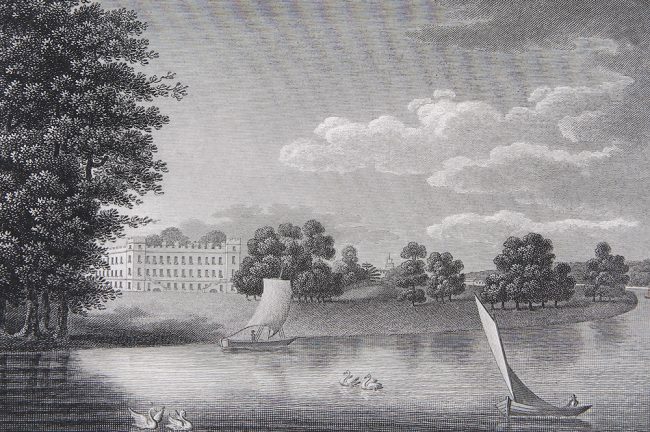
An 1815 engraving of the house from "Angus's Views of Seats." By kind permission of a private collection.
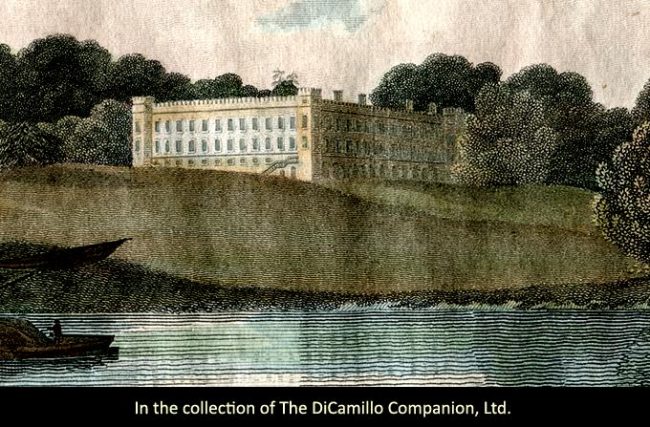
A hand-colored engraving of 1818 by J. Greig from a painting by I. Powell that shows the house from the Thames
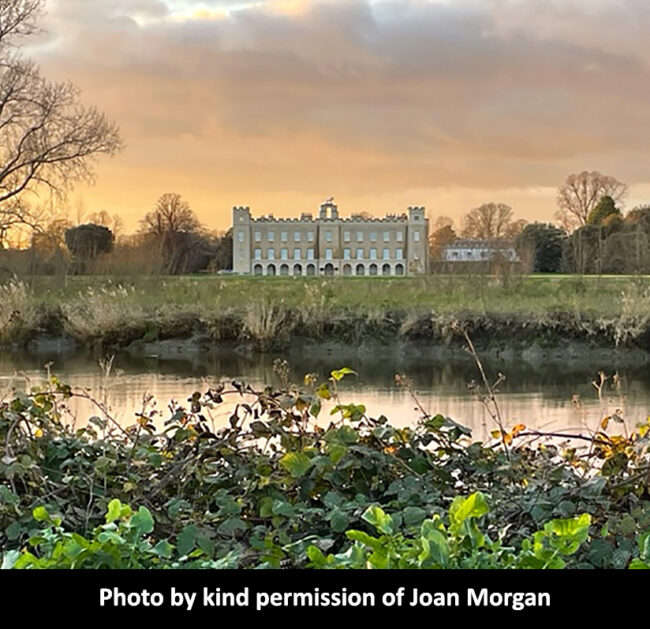
The house from across the River Thames in 2022
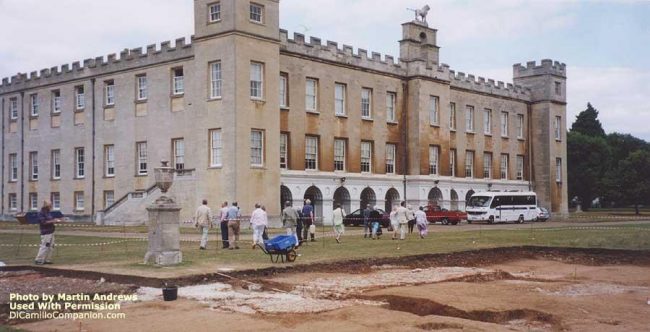
The river facade
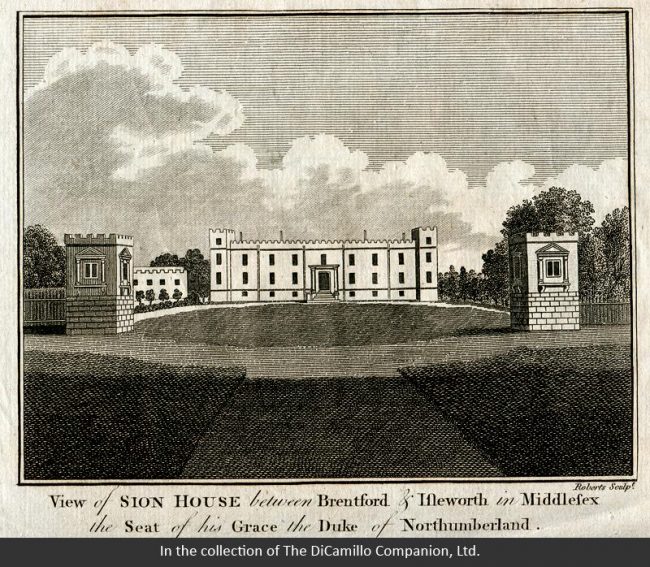
An 18th century engraving of the entrance facade by A. Hogg
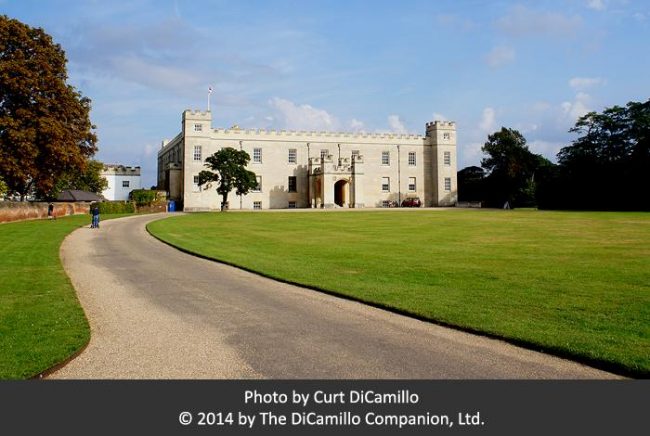
The entrance facade in 2014
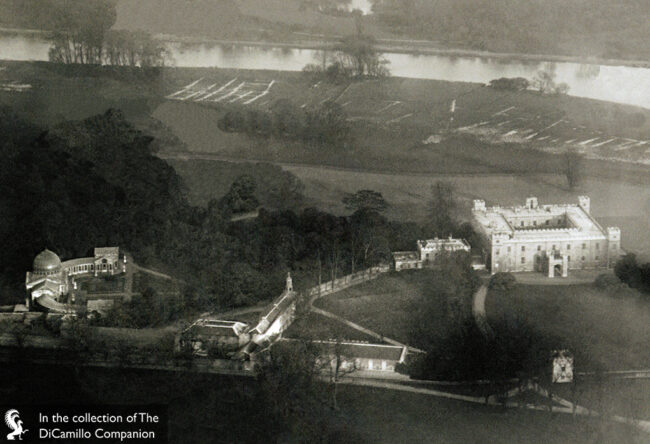
The Great Conservatory (left), the house (right), and the River Thames from a 1921 aerial photograph.
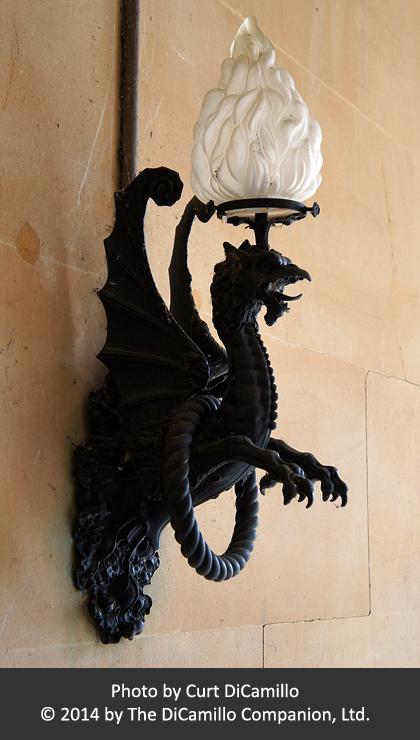
Dragon lamp in the entrance facade porte-cochere
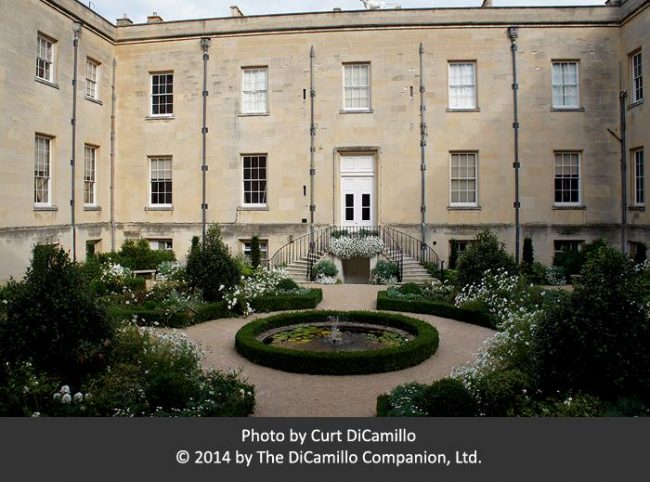
The courtyard
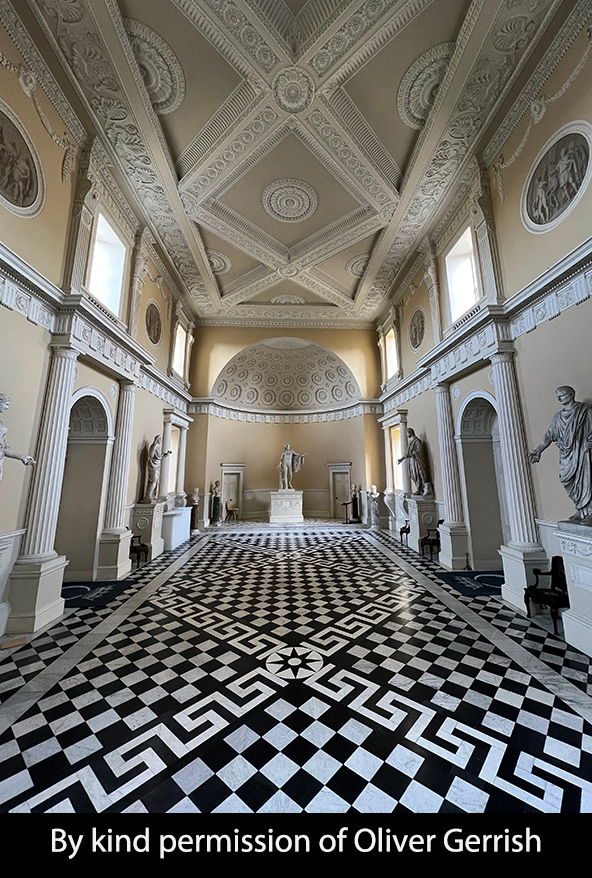
The Great Hall
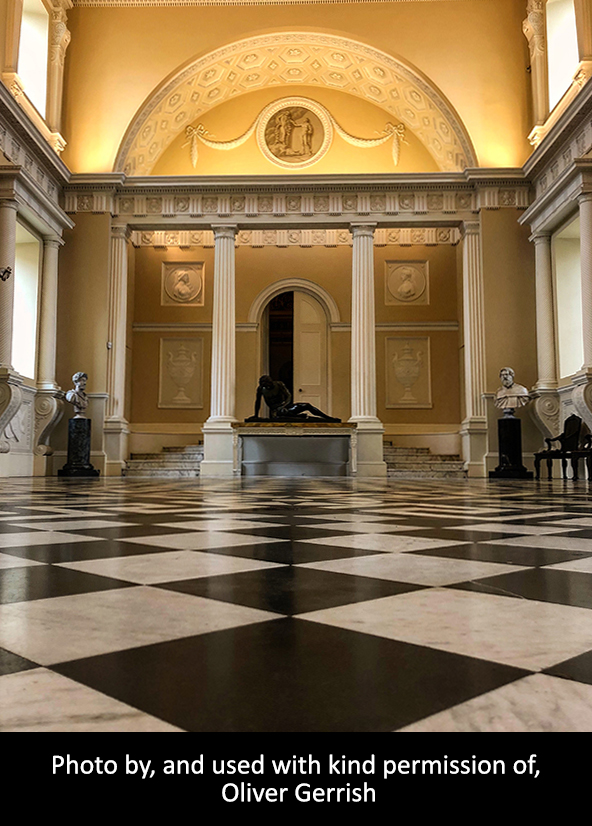
The Great Hall, with Valadier's "Dying Gaul" in the background.
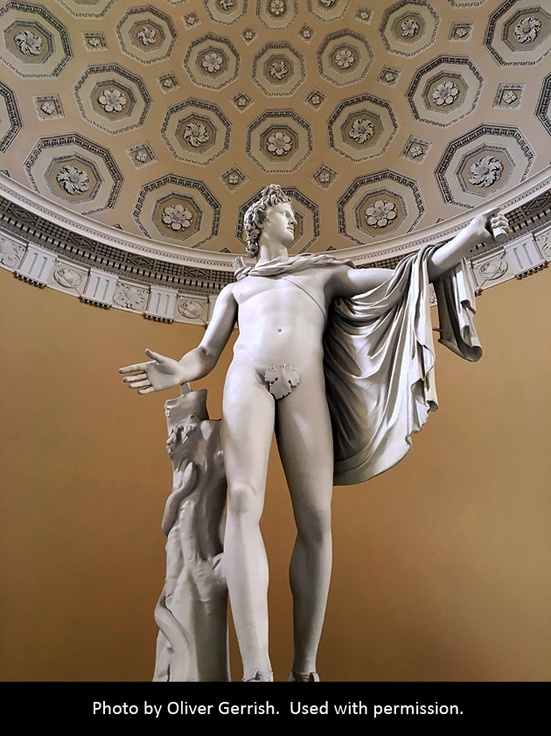
Cheere's Apollo Belvedere in the Great Hall
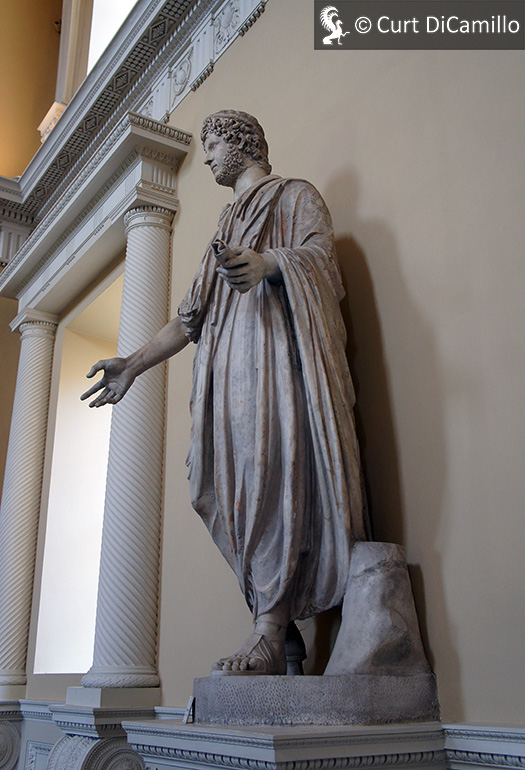
Statue of Scipio Africanus in the Great Hall
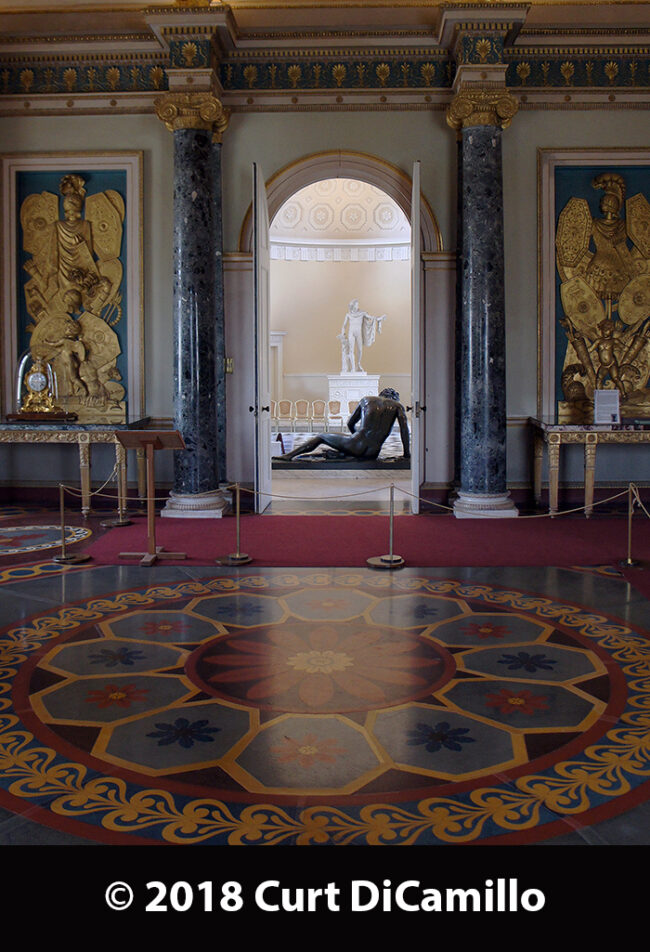
The Great Hall, with Valadier's "Dying Gaul" and the Apollo Belvedere in the background, as seen from the Ante Room.
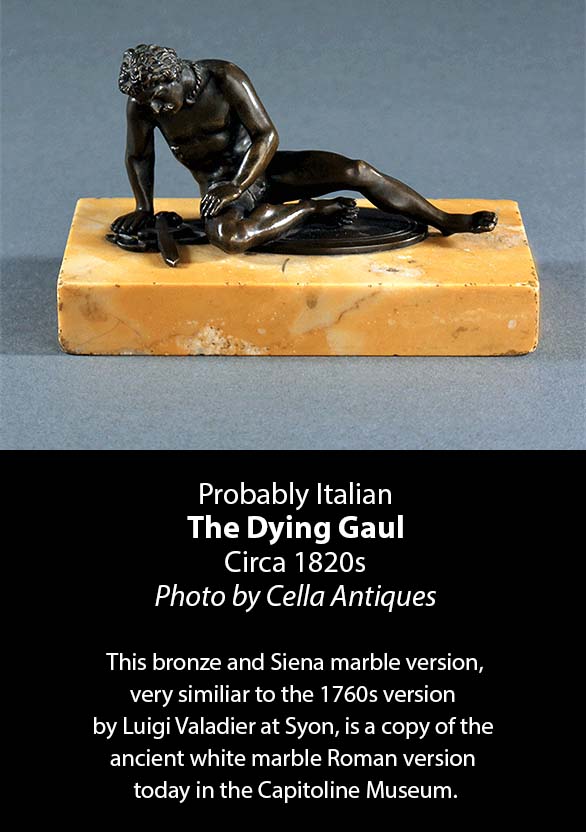
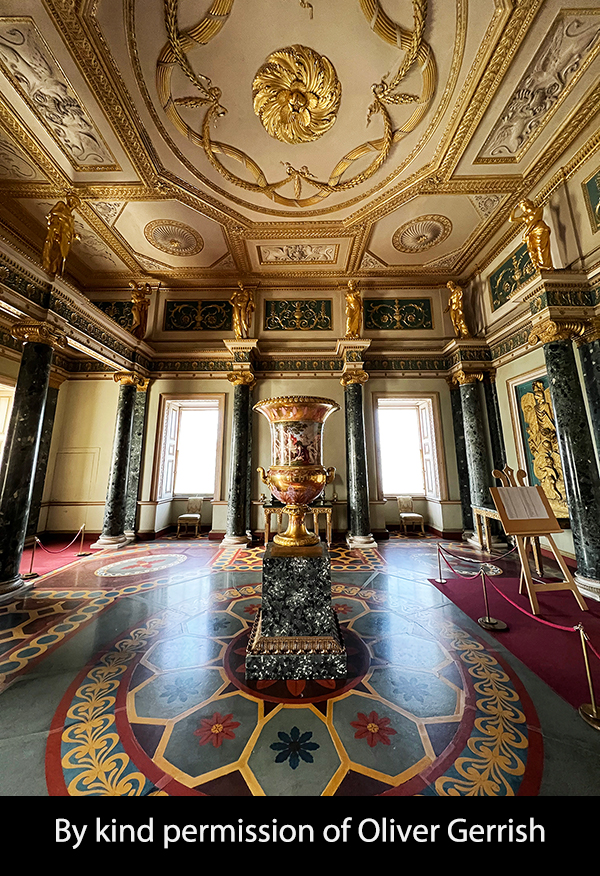
The Ante Room
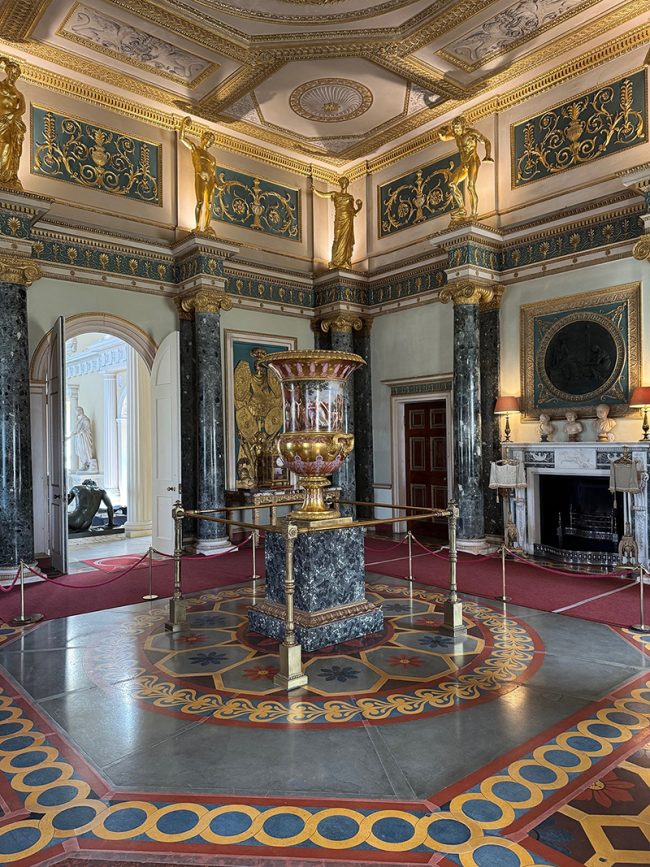
The Ante Room. Photo by kind permission of Pixie Robinson.
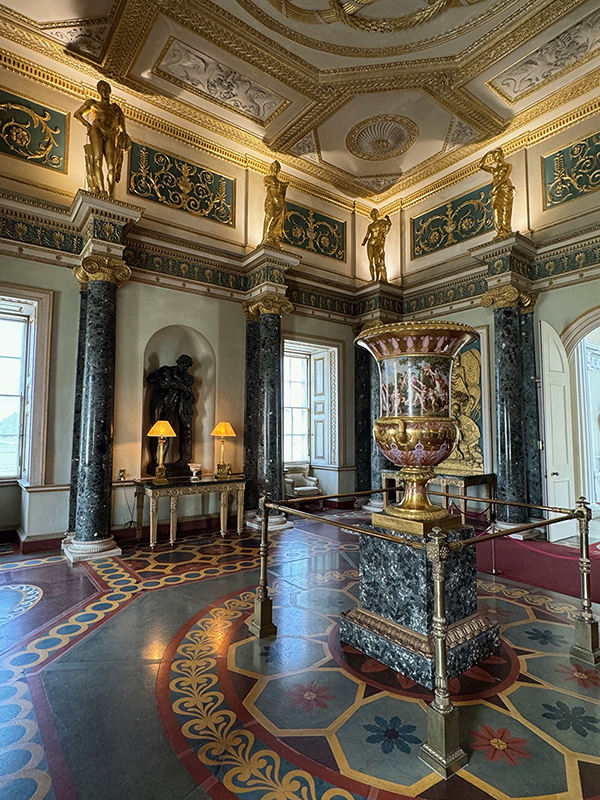
The Ante Room. Photo by kind permission of Pixie Robinson.
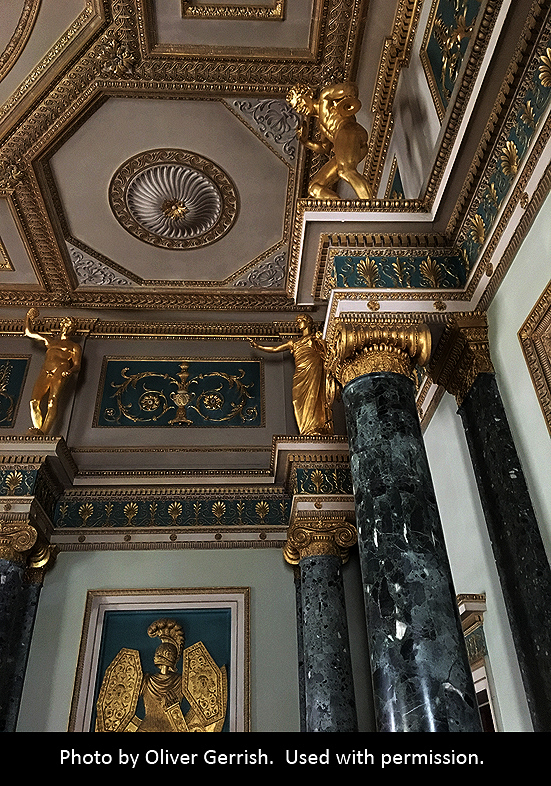
The Ante Room
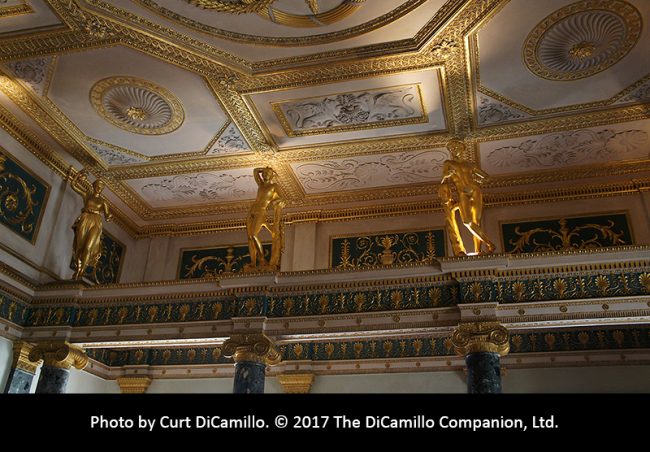
Ceiling of the Ante Room
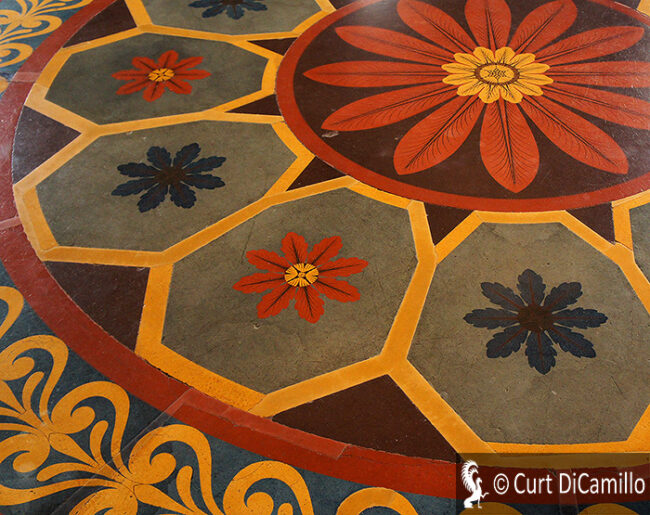
Detail of the Ante Room scagliola floor
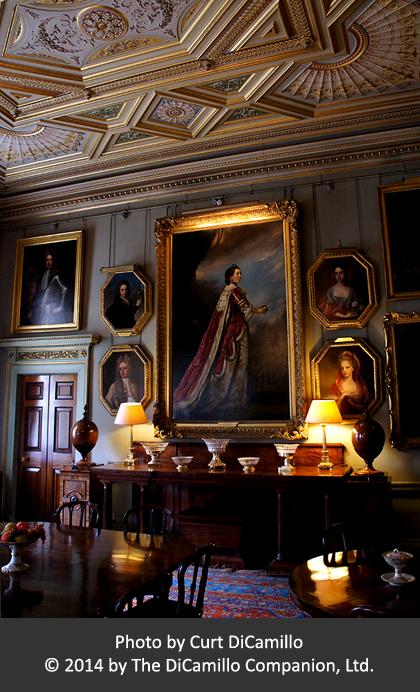
The Family Dining Room
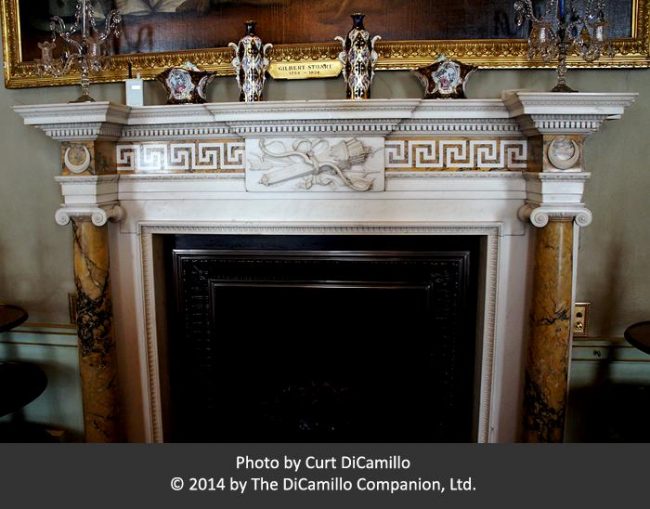
Family Dining Room fireplace
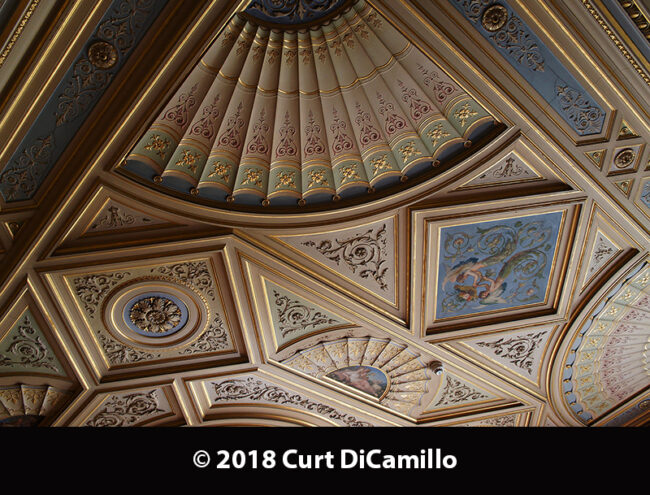
Plasterwork on the ceiling of the Green Drawing Room
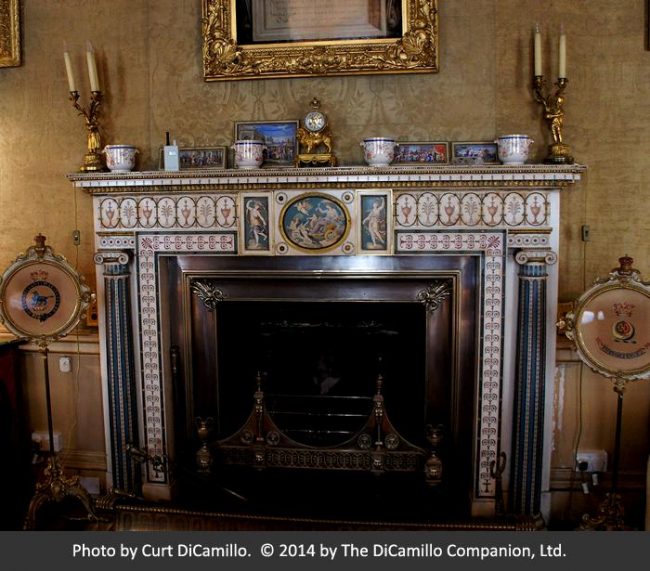
Robert Adam fireplace, today in the Green Drawing room. This fireplace was made for the Glass Drawing Room at Northumberland House.
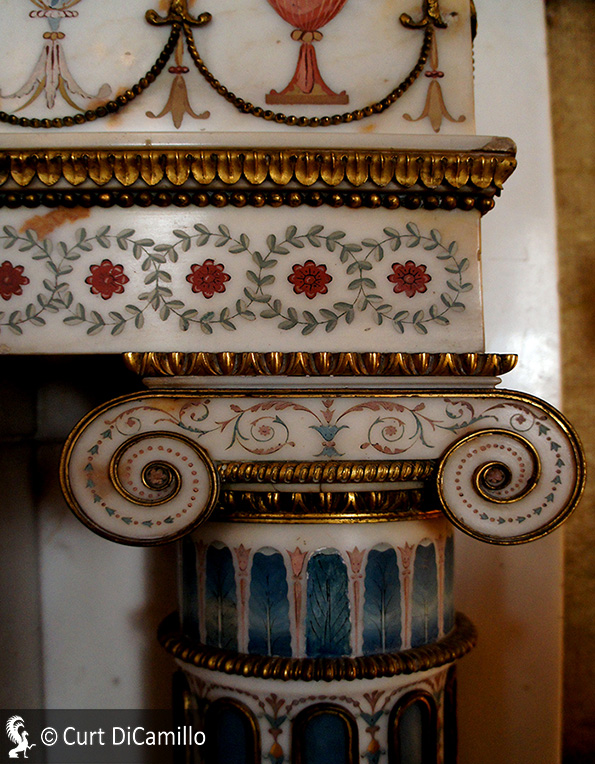
Detail of the Robert Adam fireplace in the Green Drawing Room
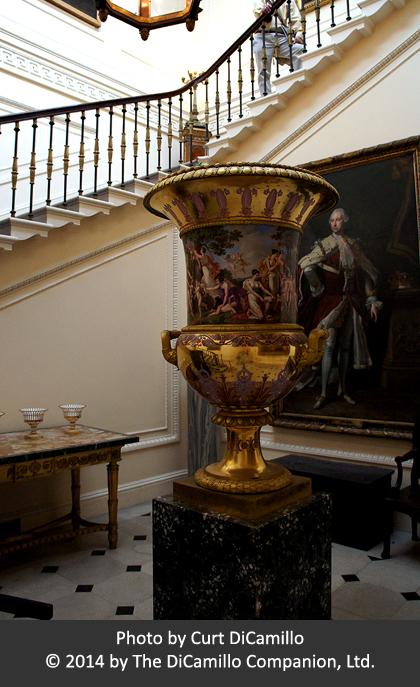
Giant Sevres vase in the staircase hall
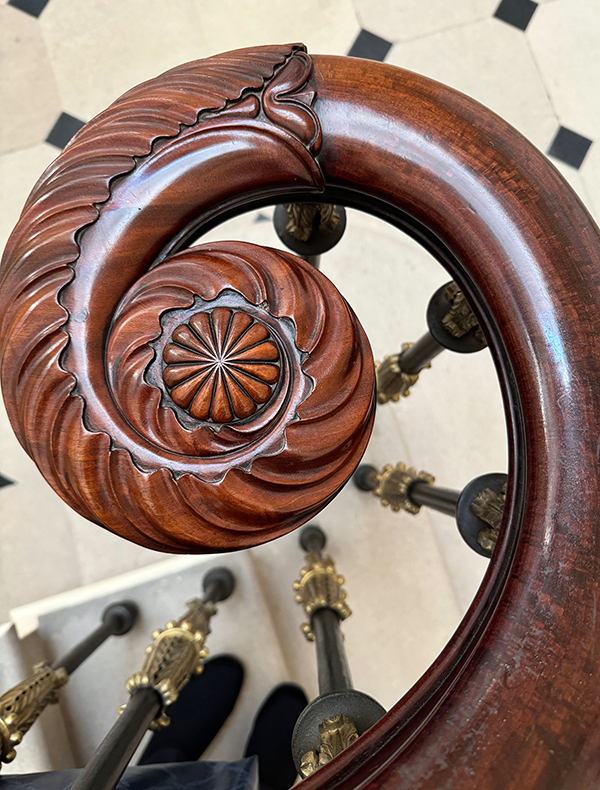
Newel post in the staircase hall. Photo by kind permission of Pixie Robinson.
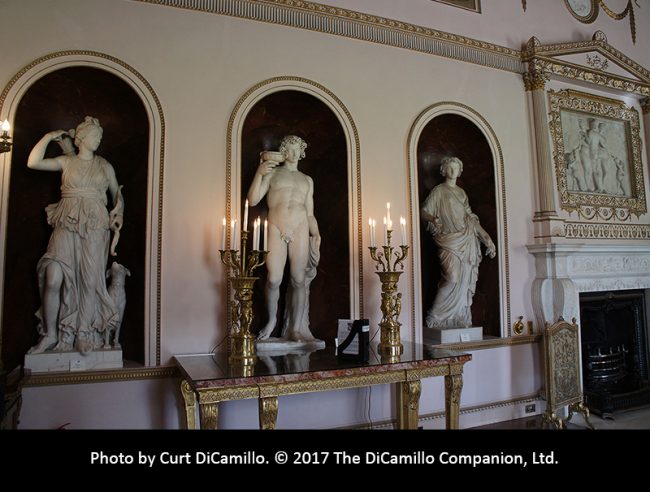
The dining room
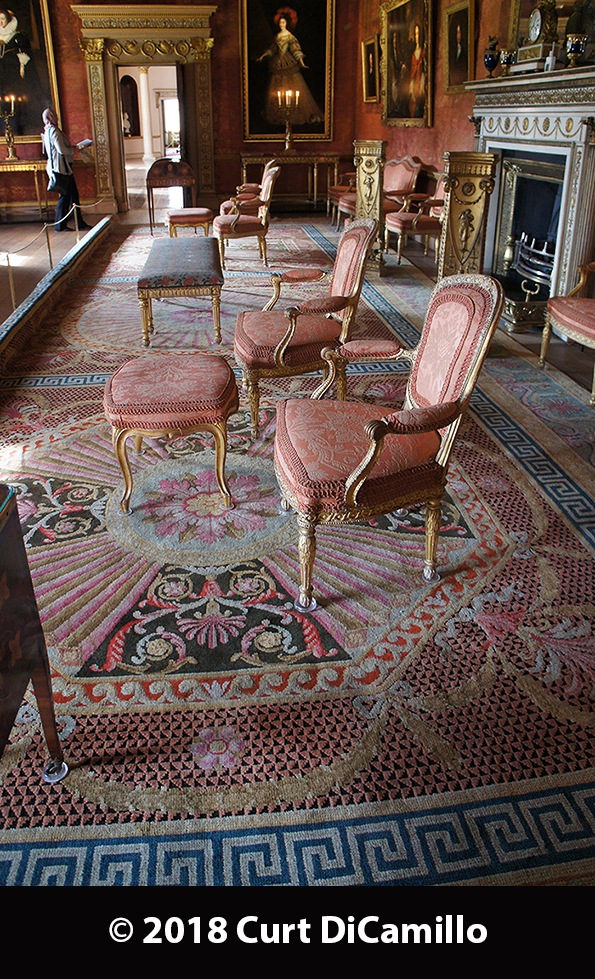
The Red Drawing Room
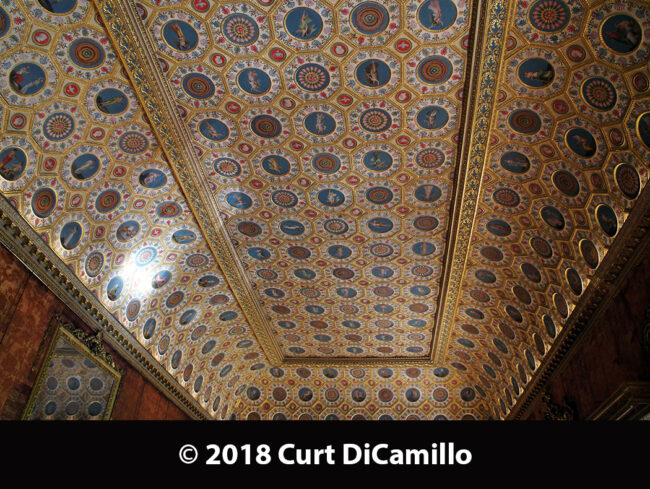
Adam's ceiling in the Red Drawing Room
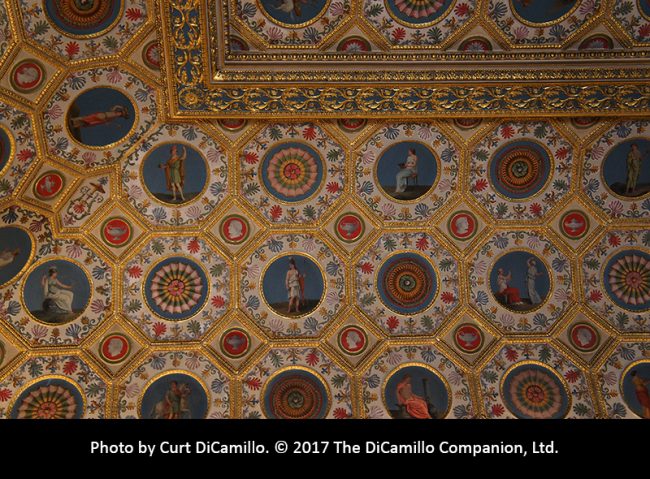
Detail of the Red Drawing Room
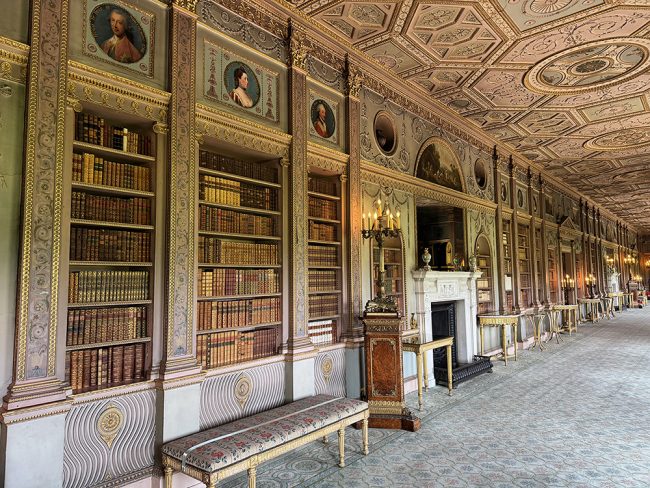
The Long Gallery. Photo by kind permission of Pixie Robinson.
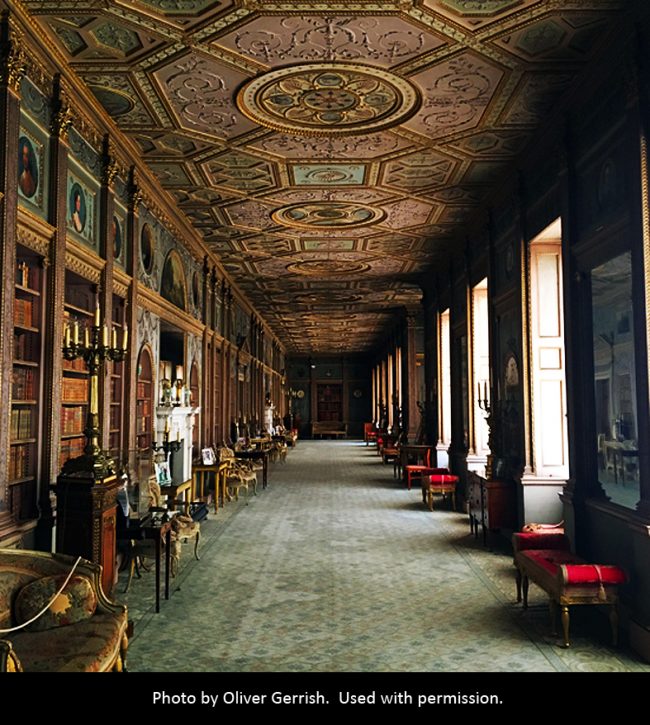
The Long Gallery
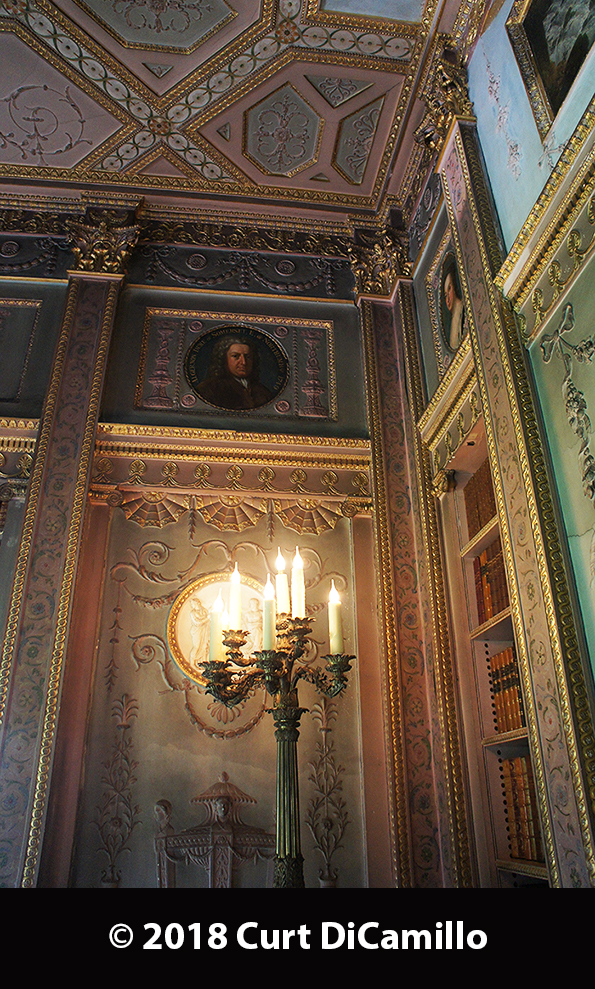
Corner in the Long Gallery
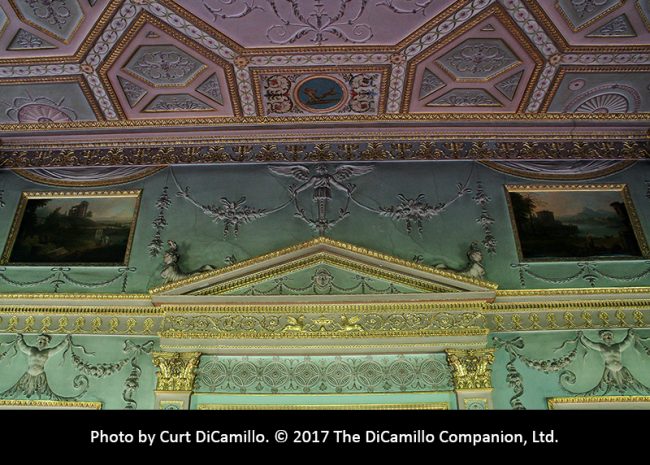
Detail of wall and ceiling of the Long Gallery
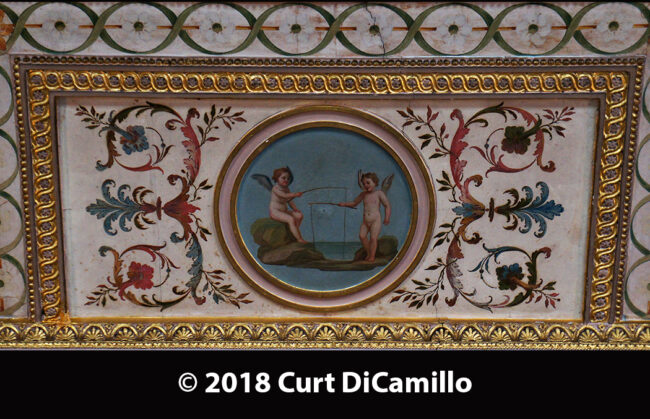
Detail of plasterwork on the ceiling of the Long Gallery
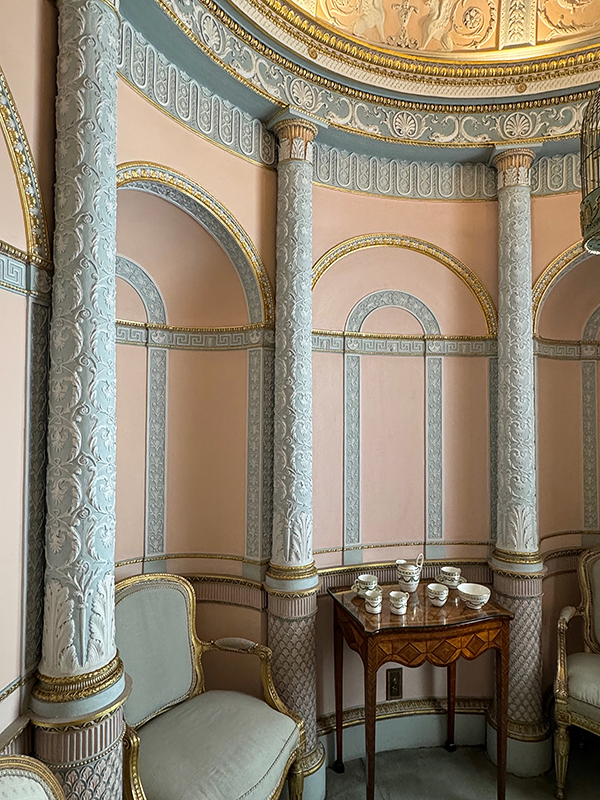
The Turret Room. Photo by kind permission of Pixie Robinson.
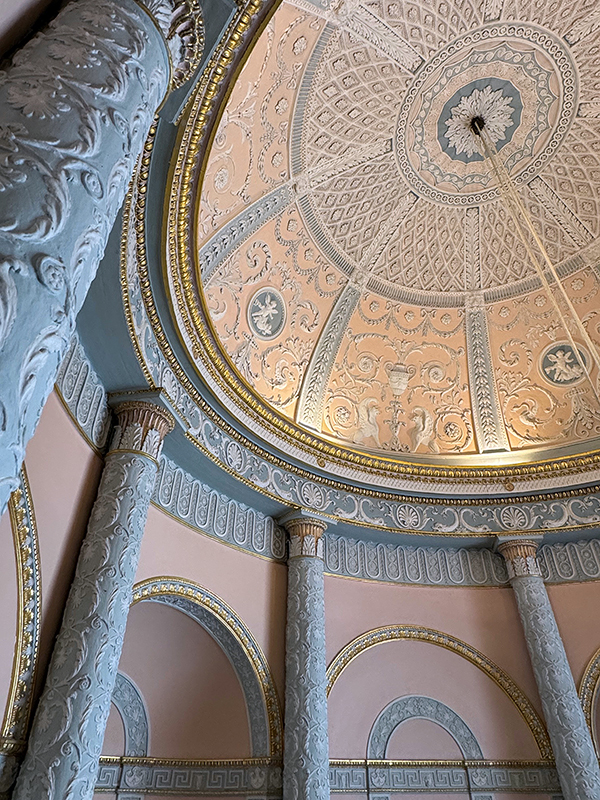
The Turret Room. Photo by kind permission of Pixie Robinson.
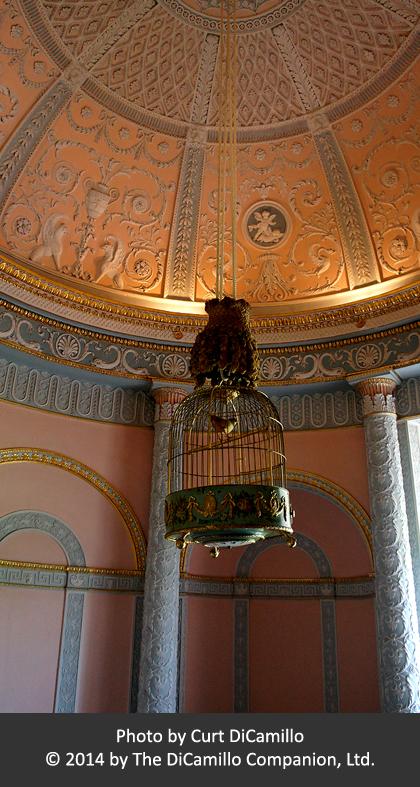
The Turret Room
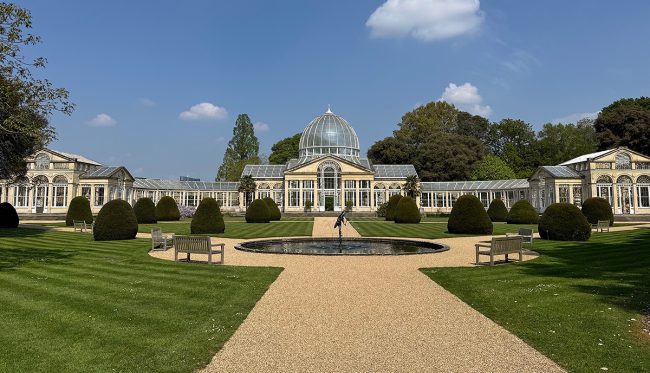
The Great Conservatory. Photo by kind permission of Pixie Robinson.
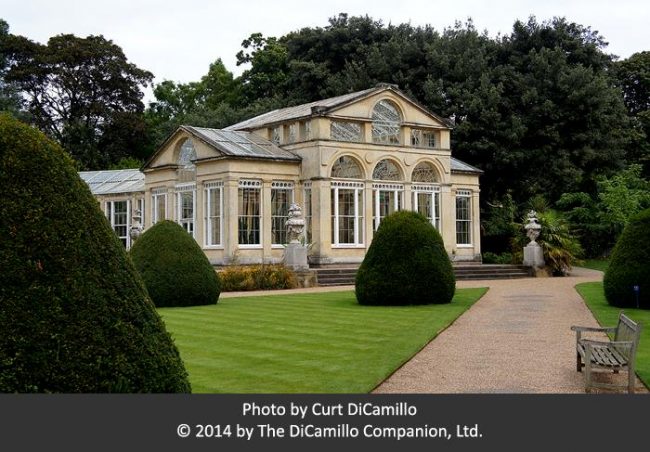
The Great Conservatory
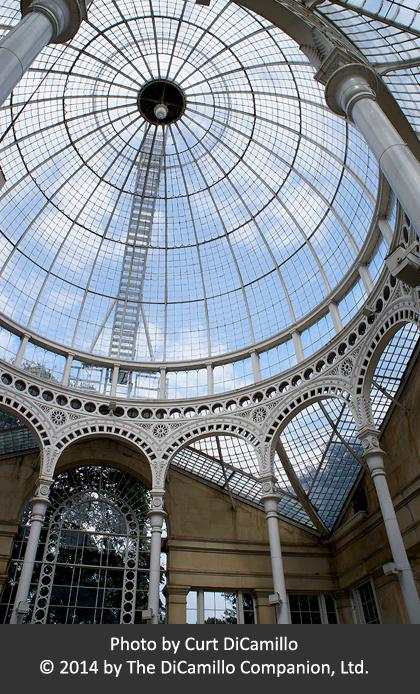
Interior of the Great Conservatory
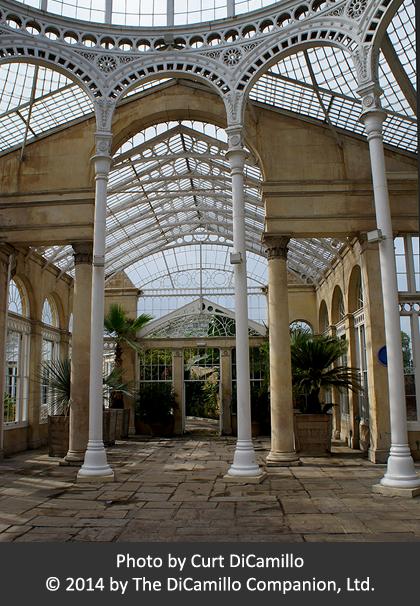
Interior of the Great Conservatory
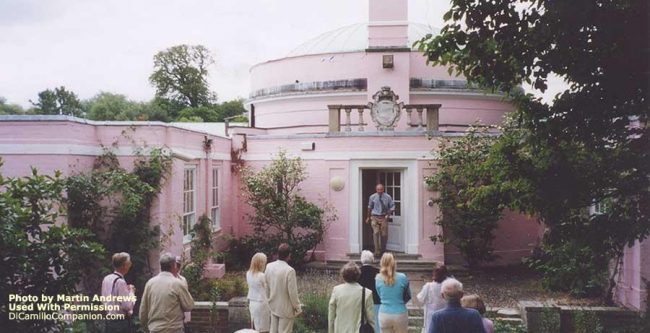
The boathouse
House & Family History: In the 1st century BC early Britons drove stakes into the bed of what is today the Thames at Syon to stop the legions of Julius Caesar from crossing the river (one of the actual stakes was discovered during dredging in the 20th century). It's ironic that Robert Adam's 18th century designs at Syon, most particularly his Great Hall (the entrance hall), would be easily recognizable today to an ancient Roman. Syon was originally the site of a Medieval abbey named after Mount Zion (Sion) in the Holy Land and founded in 1415 by Henry V so 60 nuns and 20 priests could carry forth never-ending prayers to save the soul of the king's father for his role in the murder of Richard II. It was one of the last great abbeys to be built in England (completed in 1431) and was dedicated to the Bridgettine Order, founded in the 14th century by the Swedish mystic St. Bridget. The abbey was brutally dissolved by Henry VIII in 1539 as part of the Dissolution of the Monasteries; by 1547 it had been turned into a private house (Edward VI, in the first year of his reign, granted the monastery of Sion to Edward, Duke of Somerset, the lord protector). King Henry VIII's coffin rested at Syon in 1547 on its way to Windsor for burial; during the night the coffin burst open; in the morning dogs were found licking up the bodily fluids that had leaked out of the coffin during the night. This was regarded as a divine judgment for the king's desecration of Sion Abbey. It was also at Syon, probably in the Long Gallery, that Henry VIII's great-niece, Lady Jane Grey, reluctantly accepted the crown in 1553 (she reigned for nine days as uncrowned queen before being deposed by Mary I, who had her executed for treason in 1554). Other royal visitors have included Queen Victoria and Queens Catherine of Aragon (kept as a prisoner at Syon) and Catherine Howard, both wives of Henry VIII. The celebrated Mohawk chief Joseph Brant, after whom Brantford, Ontario, is named, met the 2nd Duke of Northumberland here and fought for the British in the American War of Independence. In the 1760s Robert Adam famously designed many interiors at Syon for the 1st Duke of Northumberland, who told his architect that he wanted a Greco-Roman palace. And Adam delivered, with a suite of rooms that many scholars believe to be the most important work of his career, beginning with the Great Hall, where one enters the house. Based on an ancient Roman basilica, this Doric-columned room is painted in soft colors and features an Adam trademark: the ceiling’s design echoes that of the marble floor. Statues of Scipio Africanus (see "Images" section), Cassius, Aphrodite, and Julia Domna sit against the walls on pedestals designed by Adam, but the sculptural stars of the room are a 1764 plaster copy by John Cheere of the "Apollo Belvedere” (original in the Vatican Museums) in the apse and a 1760s bronze by Luigi Valadier of “The Dying Gaul" (see "Images"). The ancient white marble Roman version (today in the Capitoline Museum), upon which the Syon "Dying Gaul" is based, was probably discovered on the grounds of the Ludovisi family's Roman villa in the early 17th century. This Roman version, however, is itself a copy of a lost Greek original that was believed to have been commissioned in bronze in the 2nd century BC by Attalus I of Pergamon to celebrate his victory over the Galatians. The 1st Duchess of Northumberland commissioned the statue (sometimes called “The Dying Gladiator” or "The Dying Galatian") and supposedly had the bronze sculpture submerged in sea water for seven years to achieve the desired patina. From the Great Hall, one walks into the Ante Room, possibly the most luscious small room in England. Here 12 Ionic columns (a mixture of 18th century green scagliola and supposedly ancient Roman marble shafts discovered in the River Tiber) frame the room, while the floor is covered with an impossibly brilliant scagliola design. The walls are covered with gilded trophy panels; early 19th century Morel and Hughes furniture luxuriously furnishes the petite room; and in niches are bronze statues of the "Belvedere Antinous” (the original, today called the "Museo Pio-Clementino Hermes,” is in the Vatican Museums) and “Silenus with the Infant Dionysus” (original in the Museum of Classical Archaeology, Cambridge). The Long Gallery, originally a wood-paneled room designed for exercise during inclement weather, was redesigned by Adam as a Roman columbarium and library. The architect installed the 135-foot-long room with bookcases and 62 Corinthian pilasters, gilded and painted, together with classical stuccowork. The Red Drawing Room is much as Robert Adam left it: the walls are hung with the original 18th century crimson Spitalfields silk, the Adam-designed carpet, made by Moore of Moorefields, remains on the floor, and, against the walls, are pier tables designed by Adam that incorporate antique mosaics that supposedly came from the Baths of Titus in Rome. Adam's complex and sophisticated ceiling for the Red Drawing Room was the most expensive ever designed by the architect; it features octagons, diamonds, and 239 classical figures in roundels painted by Giovanni Battista Cipriani. Adam’s brilliant Glass Drawing Room from Northumberland House was disassembled and stored at Syon after the demolition of Northumberland House in 1874; a few bits of it are still at Syon today, though most of it was sold to Bert Crowther, who famously hired the room out for parties. In 1953 Crowther's parts of the room were purchased by the Victoria and Albert Museum; in 2002 one section of the Glass Drawing Room was installed in the V&A's new British Galleries. Though he was very grand, the 1st Duke was human; his illegitimate son, James Smithson (born 1765), founded the Smithsonian Institution in Washington, DC. A fine painting of Syon House by Canaletto is today on view at the Duke of Northumberland's primary seat, Alnwick Castle, in Northumberland.
Collections: Though later dispersed, in the 18th century Syon contained the largest collection of ancient coins in England. An inlaid scagliola chimneypiece and heart-slab formerly in the Glass Drawing Room at Northumberland House, designed in 1774 by Robert Adam and probably made by Bartoli and Richter, is today in the Green Drawing Room at Syon (see photo in "Images" section). A pair of lacquered brass gas lights, 122 inches tall, is today at Syon House (there is a matching set at the Bowes Museum, County Durham); both sets were made for first floor parade rooms of Northumberland House by William Collins in 1823. The Syon drawing room contains two tables with ancient Roman mosaic slab tops that supposedly were excavated from the Baths of Titus, Rome. On July 9, 2014 £32 million was raised in three auctions in London by Sotheby's, who auctioned art from Syon and Alnwick Castle.
Comments: Eileen Harris, writing in "The Genius of Robert Adam: His Interiors," states that the Ante Room at Syon "is the first English interior decorated in the manner of a classical triumphal-arch with projecting columns carrying free-standing figures." Christopher Hussey, writing in "English Country Houses: Mid Georgian, 1760-1800," cites the hall at Heveningham as "Wyatt's surviving masterpiece as an interior designer and perhaps, after Adam's Ante-room at Syon, the finest room produced by English neo-classicism." Mark Girouard, writing in "Historic Houses of Britain," calls Adam's rooms at Syon "the most brilliant sequence of rooms of his career."
Garden & Outbuildings: Syon today sits in a 200-acre park, with features of Capability Brown's 18th century landscape design still evident. Charles Fowler designed the famous great conservatory in the 1820s. The English architect John Johnston went to Brazil in 1815 to oversee the building of a replica of Robert Adam's entrance screen (the lion gate) at Syon for the Prince Regent of Portugal, who was living in exile in Rio de Janeiro. The 2nd Duke of Northumberland commissioned the replica Coade Stone gateway as a gift for the Portuguese royal. In 1874 the Percy lion statue from Northumberland House at Charing Cross, London, was erected on the river façade of Syon House. In 2002 the 12th Duke proposed building a new 154-bed hotel on the grounds of Syon. In 2004 permission was granted for the deluxe £35 million Radisson Edwardian Hotel to be located beside the main estate parking lot, with plans to build and open in 2008-09. The hotel that actually opened on March 11, 2011 in the grounds of Syon was the five-star, £40 million Waldorf Astoria London Syon Park, today Hilton London Syon Park. The new 137-room hotel's exterior was required to be sympathetic with its historic surroundings and was built on the site originally intended for the Radisson. As part of the development deal, Ability, the construction company, restored the Adam oval carriageway in front of Syon House and the Duchess Gate, which was opened for the first time since the 1930s. In November 2010, during the construction phase for the new hotel, the remains of an ancient Roman village were uncovered. Discovered approximately 20 inches below ground were over 11,000 fragments of pottery, 100 coins and pieces of jewelry, and human remains. The village was very likely built to serve the Thames crossing on the major Roman road to Silchester in northern Hampshire.
Architect: John Webb
Date: 1656-60Architect: Thomas Cundy, Sr.
Date: 1819-26Architect: Nicholas Hawksmoor
Date: 1704-06Architect: Stiff Leadbetter
Date: Circa 1762-66Architect: Robert Mylne
Date: 1803Architect: James Paine Sr.
Date: 1760Architect: James Wyatt
Date: 1789-90Architect: Decimus Burton
Date: Post 1847Architect: Thomas Hardwick
Date: 1809Architect: Robert Adam
Date: 1762-73Architect: Charles Fowler
Date: 1827-30John Bernard (J.B.) Burke, published under the title of A Visitation of the Seats and Arms of the Noblemen and Gentlemen of Great Britain and Ireland, among other titles: Vol. I, p. 182, 1852.
Country Life: XLVI, 728, 802, 838, 874, 1919. CVIII, 1873, 1950. Apr 16, 1992.
Title: Enlightened Eclecticism: The Grand Design of the 1st Duke and Duchess of Northumberland
Author: Aymonino, Adriano
Year Published: 2021
Reference: pgs. 152, 154
Publisher: London: Paul Mellon Centre for Studies in British Art
ISBN: 9781913107178
Book Type: Hardback
Title: Treasure Houses of Britain, The - SOFTBACK
Author: Jackson-Stops, Gervase (Editor)
Year Published: 1985
Reference: pg. 303
Publisher: Washington, DC: National Gallery of Art (New Haven: Yale University Press)
ISBN: 0300035530
Book Type: Softback
Title: Sotheby's Auction Catalog: Chatsworth: The Attic Sale, Oct 5-7, 2010
Author: NA
Year Published: 2010
Reference: pg. 303
Publisher: London: Sotheby's
ISBN: NA
Book Type: Softback
Title: English Country Houses: Mid Georgian, 1760-1800
Author: Hussey, Christopher
Year Published: 1956
Reference: pg. 174
Publisher: London: Country Life Limited
ISBN: NA
Book Type: Hardback
Title: Georgian Group Annual Report
Author: NA
Year Published: NA
Reference: 2002, pg. 7
Publisher: London: The Georgian Group
ISBN: NA
Book Type: Light Softback
Title: Historic Houses of Britain - ARCHIVAL COPY
Author: Girouard, Mark
Year Published: 1979
Reference: pg. 82
Publisher: New York: William Morrow
ISBN: 0688034675
Book Type: Hardback
Title: Genius of Robert Adam: His Interiors, The
Author: Harris, Eileen
Year Published: 2001
Reference: pgs. 73, 101, 103
Publisher: New Haven: Yale University Press (London: Paul Mellon Centre for Studies in British Art)
ISBN: 0300081294
Book Type: Hardback
Title: Great Houses of London, The
Author: Pearce, David
Year Published: 1986
Reference: pg. 31
Publisher: New York: The Vendome Press
ISBN: 0865650632
Book Type: Hardback
Title: Syon Park Guidebook
Author: NA
Year Published: NA
Reference: pg. 30
Publisher: UK: Beric Tempest
ISBN: NA
Book Type: Light Softback
Title: Movie Locations: A Guide to Britain & Ireland
Author: Adams, Mark
Year Published: 2000
Publisher: London: Boxtree
ISBN: 0752271695
Book Type: Softback
Title: Biographical Dictionary of British Architects, 1600-1840, A - HARDBACK
Author: Colvin, Howard
Year Published: 2008
Reference: pgs. 51, 202, 292, 394, 481, 499, 583, 638, 726, 771, 1097, 1098, 1185
Publisher: New Haven: Yale University Press
ISBN: 9780300125085
Book Type: Hardback
House Listed: Grade I
Park Listed: Grade I
Current Seat / Home of: Ralph George Algernon Percy, 12th Duke of Northumberland; Percy family here since the 16th century.
Past Seat / Home of: Edward Seymour, 1st Duke of Somerset, 16th century. Hugh Percy (Smithson), 18th Earl of Northumberland, later 1st Duke of Northumberland, until 1786; Hugh Percy, 2nd Duke of Northumberland, 1786-1817; Hugh Percy, 3rd Duke of Northumberland, 1817-47; Algernon Percy, 4th Duke of Northumberland, 1847-65; George Percy, 5th Duke of Northumberland, 1865-67; Algernon George Percy, 6th Duke of Northumberland, 1867-99; Henry George Percy, 7th Duke of Northumberland, 1899-1918; Alan Ian Percy, 8th Duke of Northumberland, 1918-30; Henry George Alan Percy, 9th Duke of Northumberland, 1930-40; Hugh Algernon Percy, 10th Duke of Northumberland, 1940-88; Henry Alan Walter Richard Percy, 11th Duke of Northumberland, 1988-95.
Current Ownership Type: Individual / Family Trust
Primary Current Ownership Use: Private Home
Ownership Details: The Hotspur Wing, which features five bedrooms, can be booked for holiday stays.
House Open to Public: Yes
Phone: 01815-600-882
Fax: 01815-680-936
Email: [email protected]
Website: https://www.syonpark.co.uk/
Historic Houses Member: Yes